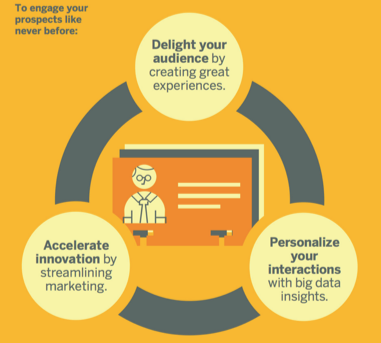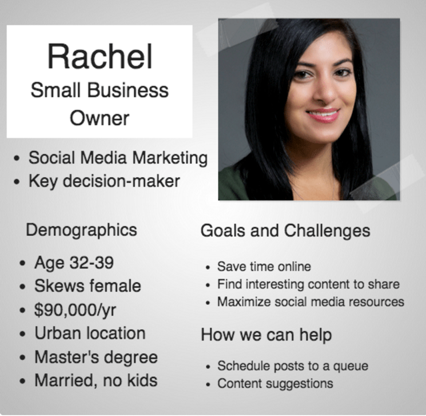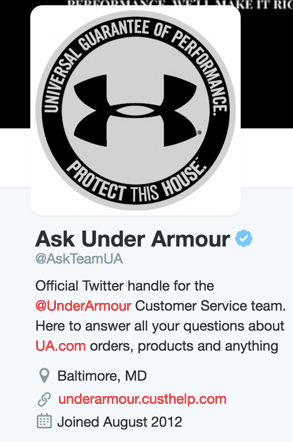Customers desire experiences, not transactions.
In a world full of distractions, engaging customers beyond the typical purchasing routine is vital for SaaS success.
And B2B consumers crave unparalleled engagement. They want personalized advice, solution-oriented features, and revenue-generating products.
An IBM annual survey noted that “as many as 65% believe customer engagement will be the primary driver of growth going forward.”
Analytics is one of the few ways to gain insights to meet your customers' needs. It helps bridge the gap between providing a service to solving real challenges.
Enhance the experience between your brand and consumers. Build data into your customer engagement strategy.
It Starts With Value
Studies show that “86% of buyers will pay more for a better customer experience, but only 1% of customers feel that vendors consistently meet their expectations.” That's a major disconnect for SaaS companies striving to improve customer engagement.
B2B customers aren't concerned about aesthetic features. And they aren't amped to hear how your team worked around the clock to fix a bug.
Your consumers want a service dedicated to solving their problems in an efficient manner.
Natalie Chan, an expert handling customer retention at Outbrain Amplify, writes:
“Businesses that focus on customers engagement are focused on value creation, not revenue extraction. These are businesses that know how to engage their customers by providing them with real value whether it be through an exceptional end-to-end customer experience, great content or strong customer support that are about delivering more than the traditional sell.”
Offering value means addressing your customers' desires. And it's all about how they perceive what's important.
For example, if a prospect is concerned about increasing open rates in email campaigns, it's not in their best interest to discuss layout designs.

Value requires laser-focus. And that's where analytics steps in.
Monitor usage data to assess the customer experience. Track acquisition channels to observe where customers are coming from and if they're converting.
Interview customers and ask them why they chose your product. Figure out how they expect to use your product and what business goals they want to achieve.
Create and deliver unprecedented value. Connect with the customer.
Know Your Buyer
In order for customer engagement to work effectively, your team must know your buyer. And that goes beyond the usual demographics, like annual revenue, company size, and location.
More importantly, for B2B companies, your team must not only focus on the business itself, but also on the employee of the business. Learning about the decision maker is crucial to your sales.
“Leveraging big data to better understand and act upon customer behavior, forces you to think differently not only about what data to keep (all of it!) and how long to keep it, but also which data you should begin capturing,” states Duane Edwards, Co-founder and Senior Vice President of Globys.
Analyze your primary behavioral data to create in-depth customer personas. Understand the decision maker's goals and challenges. Also, know how you can provide short-term and long-term guidance.

Bruce Swann, Sales and Marketing professional at Adobe, suggests applying predictive analytics:
“Once you've compiled data attributes to create a panoramic view of customers, you can begin to understand and predict customer behavior, which adds depth to that view. Examples include using a range of analyses, including customer value analysis, market basket analysis, customer profitability, response modeling, and churn analysis.”
Use data as an indicator of future behavior. If you know your client's customers, it may lead to helping your client differently.
For example, NoWait is an app that simplifies the process of waiting for a table at a restaurant. Instead of having a guest tote around a clunky pager with a range of 50 feet, restaurants only need the person's cell phone number.
When the table is ready, the guest receives a text. Plus, after dining, restaurants can text customers additional discount offerings.
Moreover, with the app, restaurants learn “who their patrons are, what time they come and go, which patrons come back the most frequently, who purchases more.” This data can be used to create messaging that appeals specifically to each customer.
Know your buyer and your buyer's customers.
Content That Resonates
Content is more than just blog posts. It includes everything from checklists to webinars.
Research shows that “64% of visitors who watch a video are more likely to buy a product online.” Therefore, content isn't just helpful for your brand awareness; it's a vital part of your customer engagement strategy, which leads to sales.
Examine heat map data to improve your content. It will help you learn what content is important to the consumer. Then, your team can focus on content placement and how different images and colors in your content affect your website visitors.
Pete Mehr, Principal at ZS Associates, says, “By quantifying which content the customer engages, and how frequently, it becomes straightforward to continue to provide content back to the customer. This continuing content consists of an ongoing series of messages to a customer.”
Moreover, analytics will uncover which type of content matters to your customer. Is it eBooks? Or maybe 30-second video clips?
Mention understands their audience. They produce content that resonates.
The social monitoring company creates webinars highlighting experts in the field. For instance, Mention invited Sujan Patel (who is hosting a webinar with Kissmetrics next week) to talk about ways to create content for “boring” industries.

Study your data to find content that speaks to your customer. It's an effective way to boost engagement.
Multi-Channel Customer Service
In America, “the cost of poor customer service is $41 billion per year.” That's a heavy burden for most companies.
Moreover, a report found that “retailers are not listening and responding to their audience enough. Some 89% of consumers' comments are left unanswered.”
Approach customer service differently. Think beyond phone support and Q&A forums.
Social media has presented another solution. Now, SaaS businesses can provide Twitter and Facebook support.
Under Armour created a Twitter handle solely for the purpose of answering customers questions about their products.

From your analytics reports, determine what channels of support satisfies your customers. What works for your competitor may not work for your SaaS.
“It's not about deploying on all channels, but deploying the right channels that align with your business. Only deploy on the channels that make sense for your business,” says Kate Leggett, a principal analyst at Forrester Research.
In addition, you must streamline your processes when using multiple channels. For instance, phone support data for a specific customer must also be available to your Twitter service reps.
At ComputerWeekly.com, Lisa Kelly suggests that “organisations need an accurate knowledge base where companies can link information from other channels, including peer-to-peer interactions, web self-service and communities, to share with customer service agents.”
It's not enough to offer various customer service routes. Your team must work together to use data to enhance the overall customer experience on each channel.
Respect The Data
Customer engagement isn't anything new. However, your SaaS can approach it differently with the help of analytics.
Add unmatched value to the customer's experience. Use data to gain insight on your buyer's habits and preferences. And provide customer service from a multi-channel perspective.
Stop neglecting, and start respecting your data.
About the Author: Shayla Price lives at the intersection of digital marketing, technology and social responsibility. Connect with her on Twitter @shaylaprice.
No comments:
Post a Comment